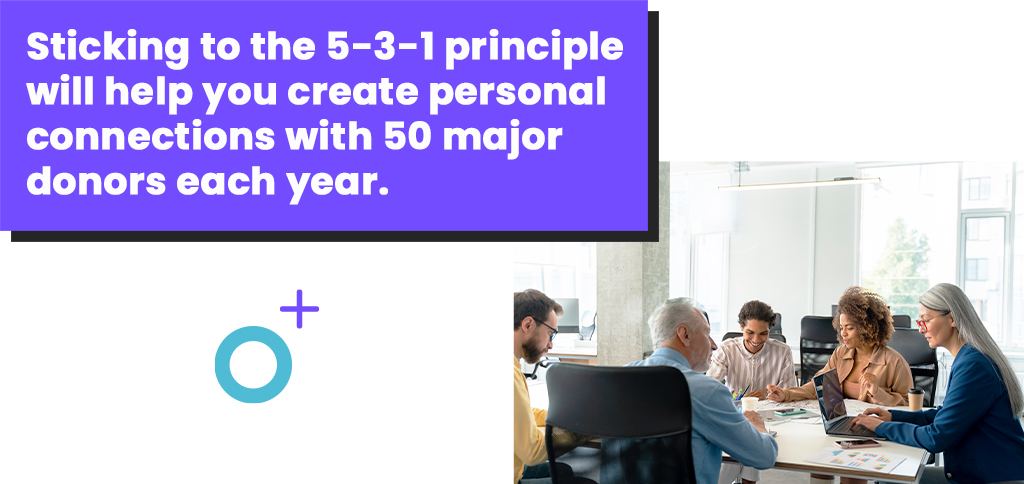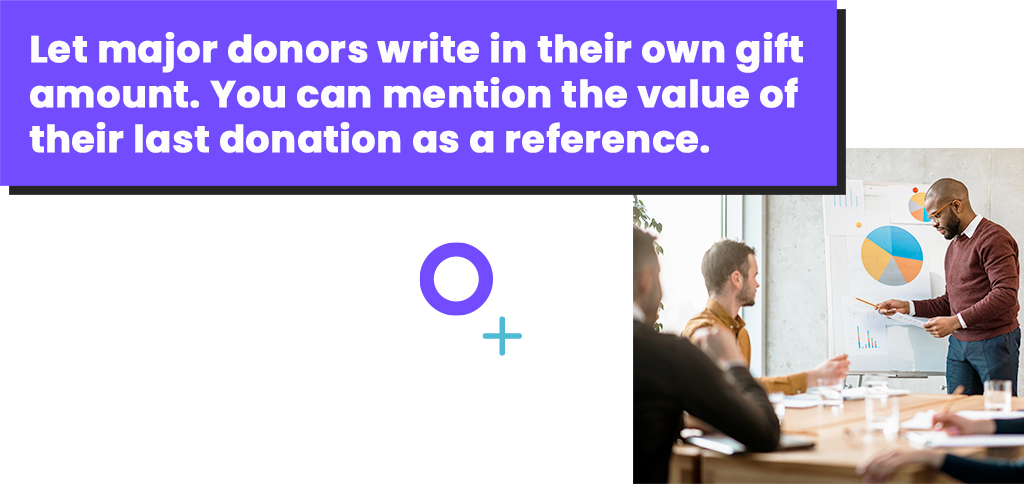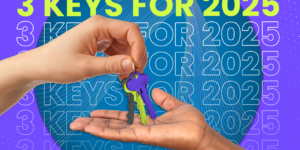It’s easy to feel overwhelmed when it comes to major donor cultivation, especially when your nonprofit doesn’t have a designated major gifts officer. After all, fundraisers, especially those at smaller organizations, wear many hats and juggle several responsibilities to help their nonprofit achieve its goals.
Major donors are a key demographic. In fact, these donors accounted for 74.3 percent of the total dollars raised last year, according to the Fundraising Effectiveness Project.
So, you can’t let major donor cultivation fall by the wayside, even if you don’t have a dedicated major gifts officer!
In this blog, we’ll share ways you can get your entire team involved in building relationships with this key donor segment. An all-hands-on-deck approach will be key. Every member of your team should get involved to make sure these donors are still in touch with your mission and ready to do more for the cause.

A more personal relationship.
You already have several touches in your fundraising outreach focused on building relationships and keeping donors engaged rather than just asking for money, right?
Well, if not, you should! And while your major donors may already be receiving some of these messages. You should go above and beyond to keep this segment engaged.
These donors already receive letters and emails explaining the impact of their generous support. But nothing feels more personal than a phone call or an in-person chat over a cup of coffee!
Yet, it can be hard for a single person in your organization to find time to call major donors and keep up with their other responsibilities. So, rally the team and get everyone involved in building relationships with major donors. After all, more hands make less work!
Remember, these supporters want to feel valued and connected to your cause. And a friendly, low-pressure conversation is one of the best ways to keep them engaged and excited to make a difference.

The 5-3-1 principle.
We recommend adopting Edward “Jay” Sinclair’s 5-3-1 principle to keep your major donors engaged and connected to your work on a more intimate level.
Here’s how it looks in practice:
5: Make five phone calls to five of your major donors each week.
3: Write three personal notes to three of your major donors each week.
1: Have one personal visit with one major donor, and schedule one visit for next week.
Nonprofits without a major gifts officer can still put the 5-3-1 principle into practice. Ask three or four members of your team to volunteer and put the 5-3-1 principle into practice each week. Create a schedule that assigns someone to keep up on your major donor outreach and then rotate them out for the next volunteer week after week.
If your team is consistent, you will have made 250 phone calls, written 150 notes, and enjoyed 50 visits with major donors after a year. And all without a designated major gifts officer!
READ MORE: The secret of building relationships with major donors.

At the year-end.
The year-end giving period is a great opportunity to engage major donors and maximize their support. Consider hosting special events, sending personalized holiday cards and handwritten letters, or even organizing virtual gatherings to express gratitude and provide updates on achievements specifically for your major donors.
You also need to think differently about your year-end appeal for this key donor group.
Typically, we recommend using a three-option ask string in your appeals. But this approach could cause major donors to give less than they would have considered on their own. Instead, opt for a blank ask string that allows major donors to give what feels right to them! You can make a reference to the value of a major donor’s last gift to help guide them.
And don’t forget to target mid-level donors that can be upgraded to the major giving level. Present them with a unique write-in ask along the lines of “I would like to increase my support to $______.”
Get your team to huddle up before the year-end giving season to determine your appeal strategy for major donors. Organizations with a major gifts officer have a dedicated staff member to drive their year-end ask strategy. But smaller nonprofits should get several people involved to review the data, share ideas, and determine the best approach for your major donors.
READ MORE: It’s not too soon to think about your year-end campaign.
All-hands-on-deck!
Every member of your nonprofit plays a crucial role when it comes to strengthening relationships with major donors. And this is even truer for smaller organizations that don’t have a dedicated major gifts officer.
And you can go beyond the points we mentioned above with a collaborative mindset. Consider involving team members in data management to help identify new and prospective major donors. And get more people involved to build a communications pipeline that keeps major donors engaged.
By working together, you can create a solid foundation for sustaining and nurturing major donor relationships. A solid base of major donors will provide you with a solid foundation to build your fundraising. Remember, your nonprofit’s success is a team effort.
So, keep up the incredible work, and remember that your dedication truly makes a difference!
And if you still find you have too much work and not enough resources, consider partnering with a fundraising agency to extend your team’s bandwidth and resources.









